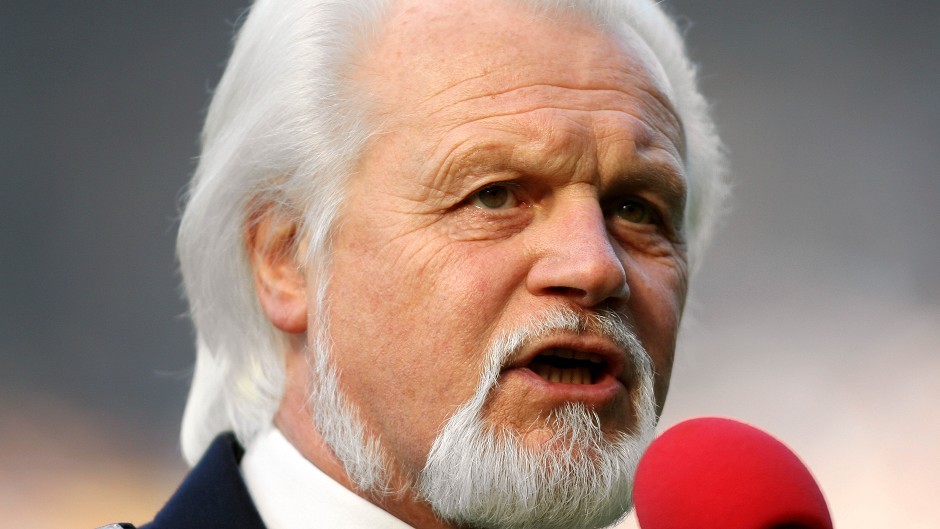Next week sees the first round of the annual Six Nations rugby international matches, with Scotland taking on Italy at Murrayfield.
As the teams line up, they’ll hear the Scots in the crowd roaring out our “national anthem”, Flower of Scotland. As usual, of course, as we reach the last line, the pipes in the band will fail to play the correct tune, as one of the notes is impossible to play on the instrument.
So, when we add to that the fact that the song is backward-looking and militaristic, is it really suitable, or indeed the best choice, as a national anthem for Scotland? It was written by the late Roy Williamson of The Corries in the 1960s, and quickly gained popularity.
Scotland winger Billy Steele introduced his British Lions team-mates to the song on the British Lions tour of South Africa in 1974, and the Lions sang the song on a TV broadcast on their return. It was then quickly adopted as an anthem by Scottish rugby fans at international matches.
It was only in 1990 that it was used properly as a pre-match anthem at a rugby international. That game, in which Scotland beat England 13-7 to take the Grand Slam, sealed its choice as the official SRU anthem. The Scottish football authorities followed suit a few years later, and it was adopted for Scottish athletes at the Commonwealth Games for the first time in 2010.
But if not Flower of Scotland, what are the alternatives? At the opening of the Scottish Parliament, in 1999, Sheena Wellington sang a stunning version of Robert Burns’ A Man’s a Man, a song with wonderful words, and an international rather than nationalistic outlook. At no point in any of the verses, however, does the song even mention Scotland, surely something which the anthem of any country should include.
Traditionally, Burns’ Scots Wha Hae was considered our national anthem, and for years was sung at SNP gatherings and at the conclusion of their conferences – although this is no longer always the case, as the party tries to shake off its past and adopt a more modern outlook.
Once again, though, it is militaristic and like Flower of Scotland looks backwards to the Battle of Bannockburn. It may also be tainted by its association with one political party.
Freedom Come All-Ye, a song written to the pipe tune The Bloody Fields of Flanders by Scots folklorist, poet and academic Hamish Henderson, is another contender, with excellent, outward-looking lyrics.
It is though written in broad Scots, which some believe would be difficult for many Scots to learn and sing. But at the last census, it was revealed that only 19% of Welsh people actually speak the Welsh language, yet before their international rugby or football matches, there seems no barrier to the entire crowd singing their own anthem in Welsh, despite many of them not being conversant in it.
Before Flower of Scotland was adopted as Scotland’s Commonwealth Games anthem, Scots gold medallists stood on the podium to the strains of Scotland the Brave. Its tune has been around since the early years of the 20th Century, though it is a variant of the traditional song Wha Saw the 42nd? The words of Scotland the Brave were, perhaps surprisingly, written by Glasgow journalist Cliff Hanley for a Christmas pantomime as recently as the early 1950s. Again, although everyone knows the tune, few people are really familiar with the words.
In recent years, some have suggested Highland Cathedral, written by two German musicians for a Highland Games meeting in Germany in 1982. But as Scots musician Phil Cunningham has pointed out, if you take out the bagpipes, the tune sounds German, not Scottish.
It was, though, the choice of former first minister Jack McConnell when the issue of a national anthem for Scotland was raised politically back in 2004. At that time, it was decided that choosing an official anthem was within the legal powers of the Scottish Parliament and the Scottish Greens supported a campaign to select a song through the Parliament’s Petitions Committee. There was even an idea that a new song could be written to fit the bill. The matter was referred to the then Scottish Executive, but they decided not to proceed with the idea.
In 2006, the Royal Scottish National Orchestra conducted an online poll. Not surprisingly, Flower of Scotland came put well ahead of the other contenders with 41% of the votes. Scotland the Brave received 29%, and Highland Cathedral 16%. The votes for any other suggestions were down in the single figures.
The bottom line is that next week, around 60,000 fans at Murrayfield will be belting out Flower of Scotland before the kick-off.
Whatever the merits of the song – and I have to say it wouldn’t be my own choice for our anthem – the Scottish people have taken the song to their hearts and have voted with their voices. Flower of Scotland it will have to be.
Unless, of course, the Scottish Parliament decides it’s time to have another look at the question. But it will be hard to not choose a song people have in their hearts already.
Campbell Gunn is a retired political editor who served as special adviser to two First Ministers of Scotland










